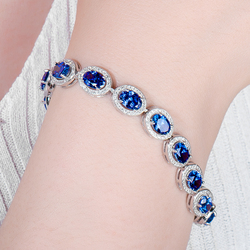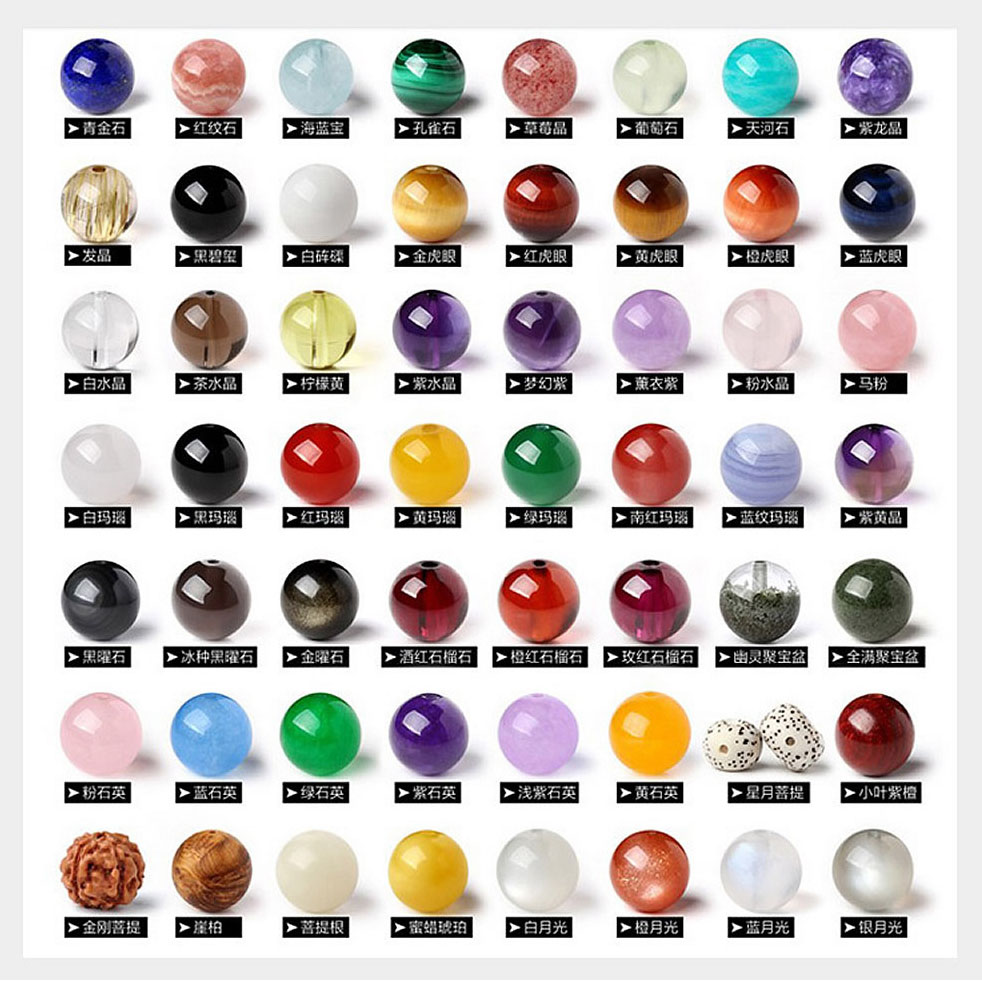How to identify natural stone beads?
One view: that is, to observe the surface structure of natural stone with the naked eye. Generally speaking, natural stone with uniform fine-grain structure has a delicate texture and is the best natural stone; stone with coarse-grained and unequal-grained structure has poor appearance, uneven mechanical and mechanical properties, and slightly poor quality. In addition, due to the influence of geological action, natural stone often produces some fine cracks in it, and natural stone is most likely to rupture along these parts, which should be carefully removed. As for the lack of edges and corners, it affects the appearance, and you should pay special attention when choosing.
Second listen: listen to the percussion sound of natural stone. Generally speaking, the sound of good quality natural stone is crisp and pleasant to the ear; on the contrary, if there are micro-cracks inside the natural stone or the contact between particles becomes loose due to weathering, the sound of the knock is hoarse.
Three tests: use a simple test method to test the quality of natural stone. Usually, a small drop of ink is dropped on the back of the natural stone. If the ink quickly disperses and leaches out, it means that the particles inside the natural stone are loose or there are gaps, and the quality of the stone is not good; on the contrary, if the ink drops in place, it means that the stone is dense. Good texture (this is very similar to tiles).
What is the rarest gemstone?
Tanzanite blue – one of the rarest gemstones in the world
Few people have heard of tanzanite sapphire in China, and most people know only about diamonds and ruby sapphire (tanzanite used to be called tanzanite. Precious, renamed Tanzanian Blue based on its colour). This new variety of gemstones was discovered in Tanzania, Africa in 1967. It is produced near the northern city of Arusha, at the foot of the world famous tourist spot Kilimanjaro, which is the only place in the world. Although Tanzanite was discovered late, its formation history is not short. Millions of years ago, a variety of minerals formed in the vast plains near Mount Kilimanjaro, the most precious of which is tanzanite, but it has always been hidden. After a fire caused by lightning in 1967, a grazing Maasai man found a blue stone on Mount Merelani. He thought it was very beautiful, so he picked it up. This stone was Tanzanian blue. The famous shepherd also became the first collector of Tanzanian blue. Lewis, a jeweler in New York, USA, saw the gem shortly after, and was immediately “stunned”, convinced that this gem would cause a sensation. However, the English name of the gemstone “Zoisite” (zoisite) is similar to the English “suicide” (suicide). Because he was afraid that people would think it was unlucky, he came up with the idea of replacing it with “Tanzanite”, with a suffix of ore from the place of origin. This name is very unique. After the news broke, jewellers looking for new varieties came to inquire. Two years later, tanzanite entered the American market, Tiffany in New York quickly pushed it to the international jewelry market, and monopolized the only mine. American women who like to pursue novelty immediately became its buyers. The rise of tanzanite is a miracle. It has become one of the most precious gemstones in the world in just over 30 years after its discovery, and is known as the “gem of the 20th century”. The gemstone immediately established itself in the jewelry market and is now known as tanzanite blue.
In fact, Tanzanian blue is not pure blue, but a slightly purplish hue in the blue, which looks noble and gorgeous. However, its hardness is not high, so you need to be extra careful when wearing it, do not collide, let alone scratch with hard objects. Usually the size of the gemstone is proportional to the degree of preciousness, the larger the size, the higher the value, but Tanzanian blue is an exception. Tanzanian blues ranging from 2 to 5 carats are not uncommon, but in order to obtain high-quality tanzanite blue, cutting a small piece of fine quality requires wasting a large gem.

Tanzanian blue is so precious also because of its rarity. At present, there are only tanzanite deposits in the Merelani area, and the area is only 20 square kilometers. It is divided into four mining areas ABCD. Due to the early mining chaos, the deposits were destroyed. Trace mining, the D area is strictly controlled by the Tanzanian government, making the supply less and less, but people’s love for this gem is increasing day by day, making Tanzanian blue worth more and more.
Post time: Mar-14-2022

